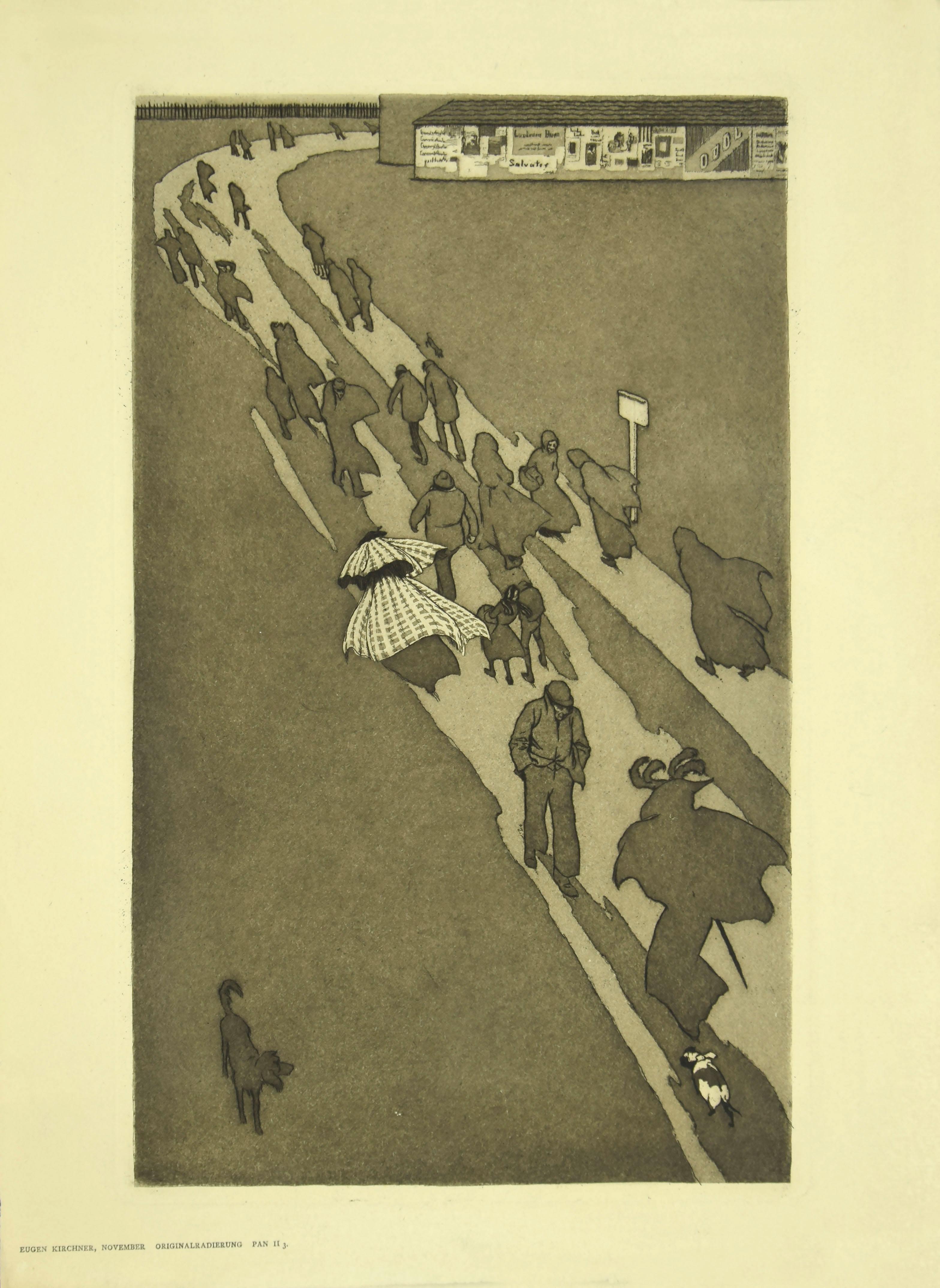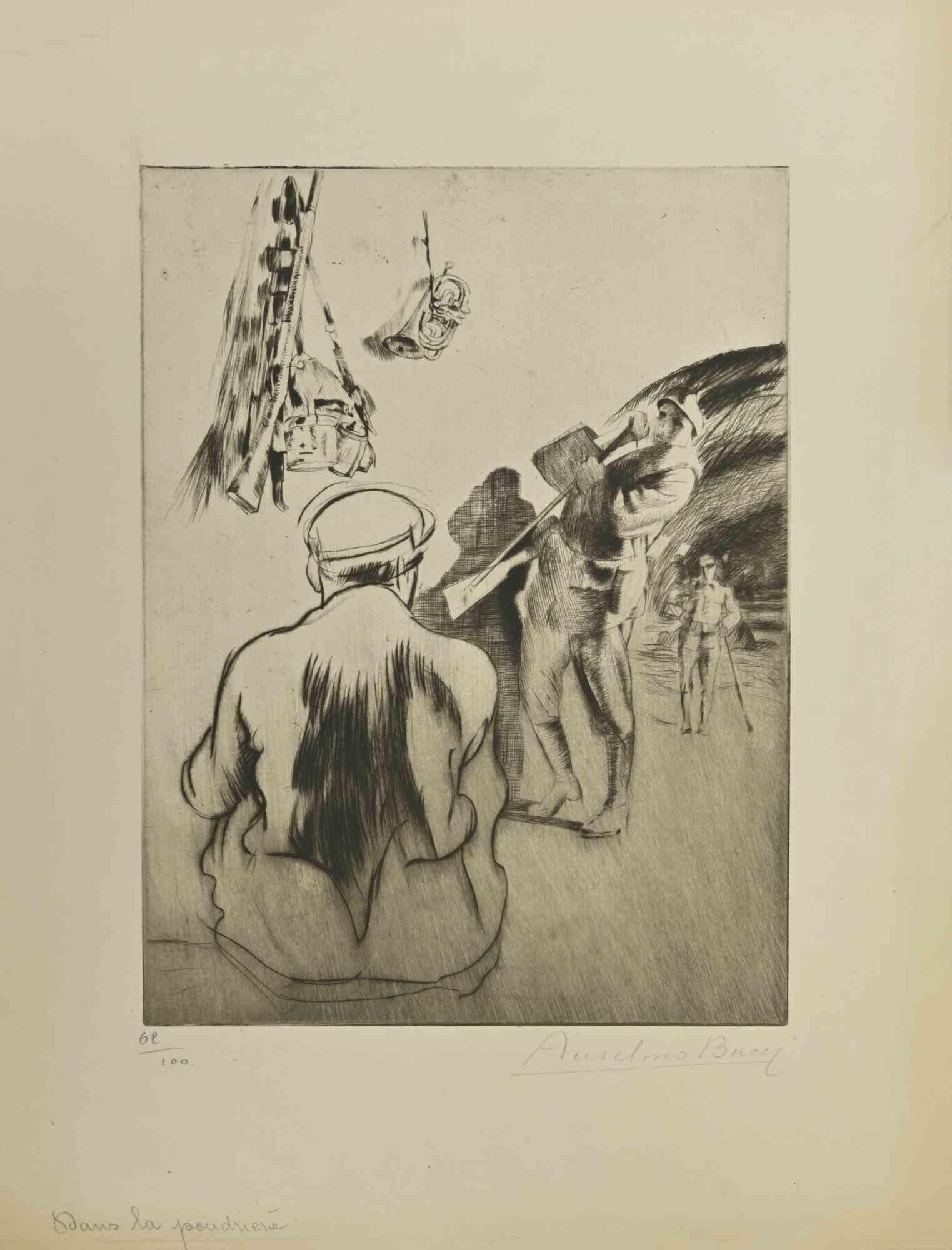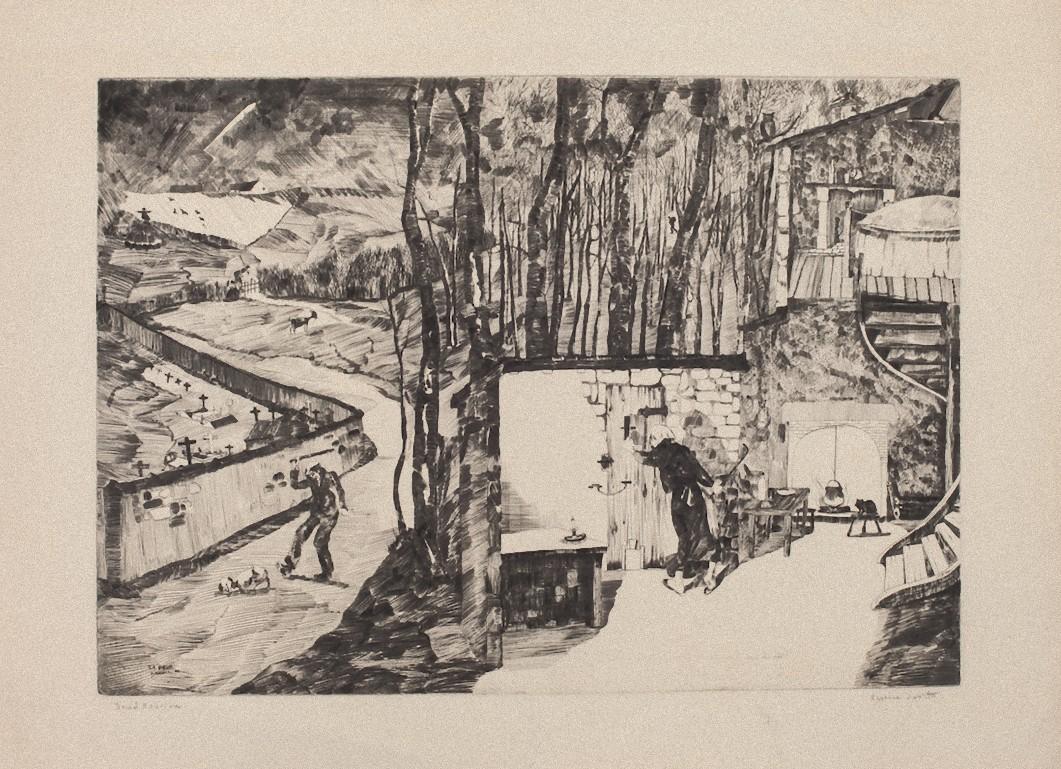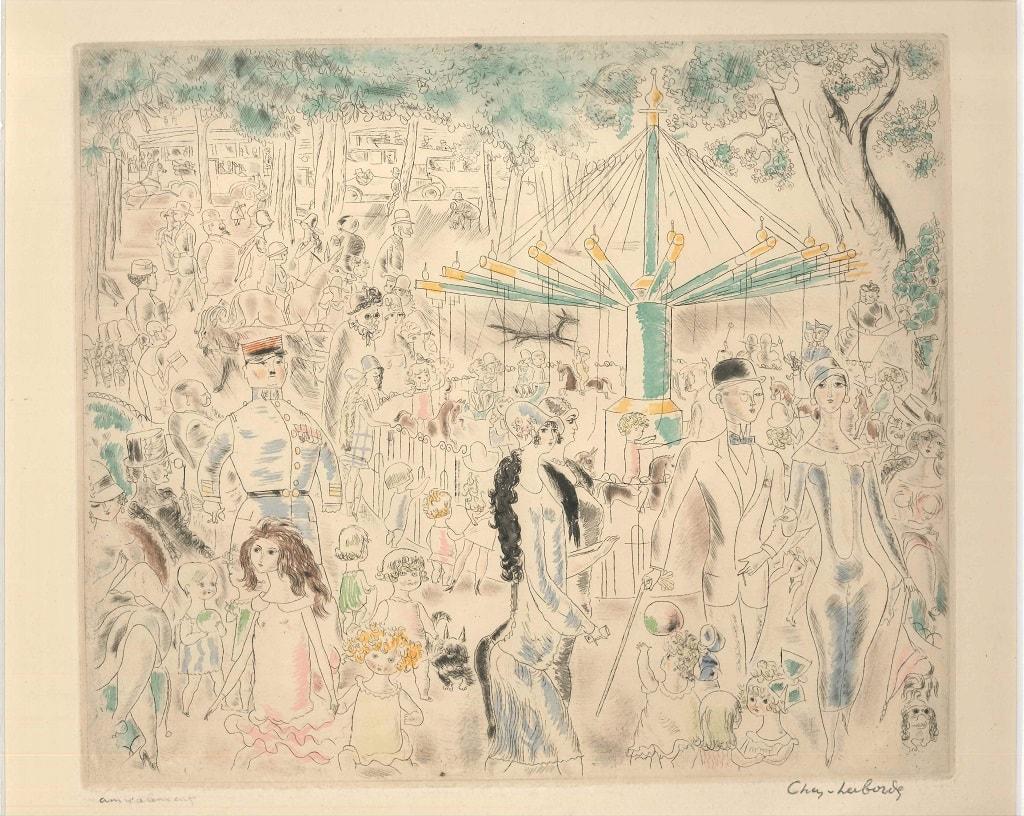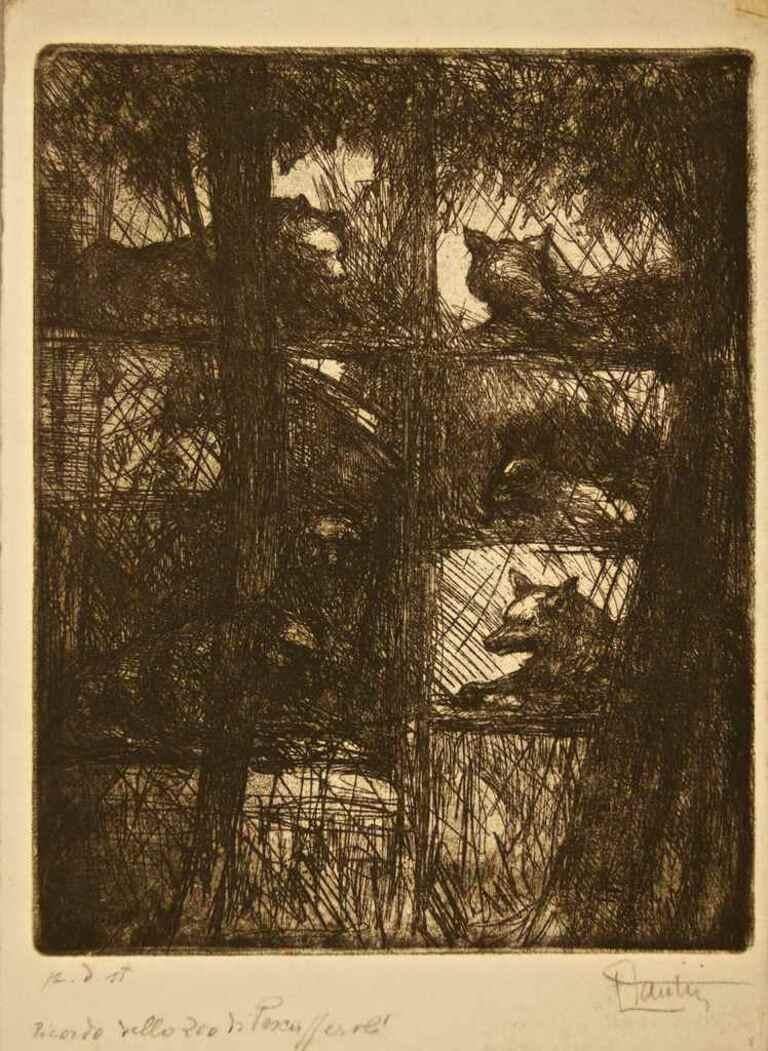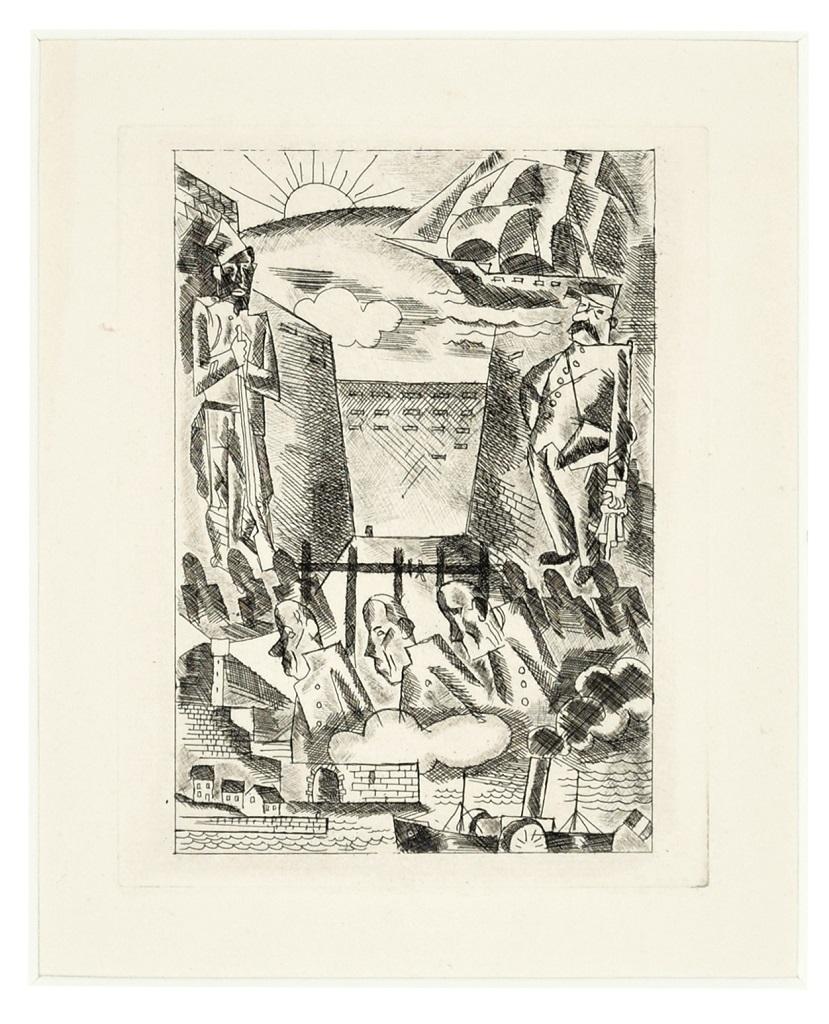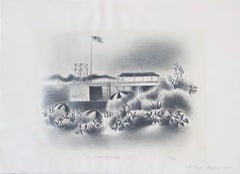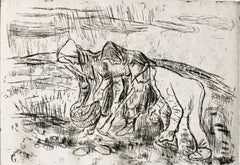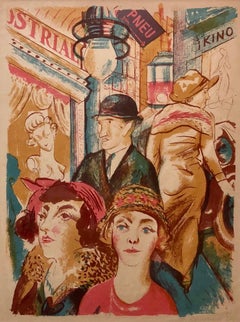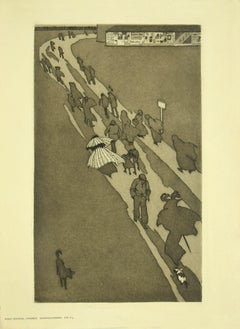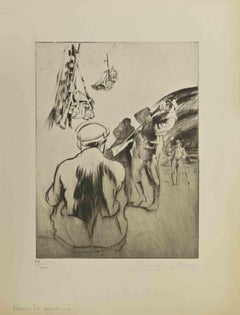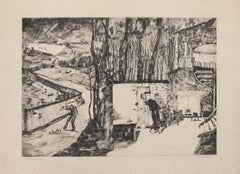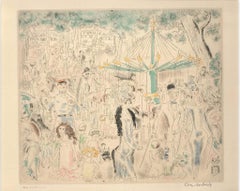Items Similar to Drypoint Etching "Penguin Island" 1926
Want more images or videos?
Request additional images or videos from the seller
1 of 8
Peggy BaconDrypoint Etching "Penguin Island" 19261926
1926
$2,400
£1,866.25
€2,121.94
CA$3,457.71
A$3,780.56
CHF 1,976.52
MX$45,479.53
NOK 25,010.87
SEK 23,457.99
DKK 15,844.35
About the Item
Margaret Frances "Peggy" Bacon (May 2, 1895 – January 4, 1987) was an American printmaker, illustrator, painter and writer. Bacon was known for her humorous and ironic etchings and drawings, as well as for her satirical caricatures of prominent personalities in the late 1920s and 1930s. Bacon's parents were both artists and met while attending the Art Students League in New York. At the end of 1913, Bacon first studied art at the School of Applied Design for Women but disliked it calling it, "the prissiest, silliest place that ever was." She transferred after a few weeks to the School of Fine and Applied Arts on the West Wide where she took classes in illustration and life drawing. During the summer of 1914 Bacon attended Jonas Lie's landscape class in Port Jefferson, Long Island.
From 1915-1920 Bacon studied painting with Kenneth Hayes Miller, John Sloan, George Bellows and others at the Art Students League. While at the League, Bacon became friends with several other artists. Her circle of friends and acquaintances included Dorothea Schwarz (Greenbaum), Anne Rector (Duffy), Betty Burroughs (Woodhouse), Katherine Schmidt (Kuniyoshi Shubert), Yasuo Kuniyoshi, Molly Luce, Dorothy Varian, Edmund Duffy, Dick Dyer, David Morrison, and Andrew Dasburg. In 1917, she exhibited two works in the First Annual Exhibition of the Society of Independent Artists (April 10-May 6, 1917). Around 1917 Bacon also became interested in printmaking and taught herself drypoint as there was no one teaching etching at the Art Students League at the time. Bacon's first caricature prints were featured in single-issue, satirical magazine Bad News, which was published by Bacon and her fellow art students in 1918. Drypoint was Bacon's primary medium until 1927, and pastels until 1945. Although Bacon had trained as a painter, she eventually became famous for her satirical prints and drawings. Her caricatures were first published in a single issue spoof, entitled Bad News. Her early portrait caricatures in Bad News, like her early drypoints, depended upon a hard, controlling outline, filled in with shading or an obscure pattern. Bacon was also featured in solo shows in prominent galleries such as; Stieglitz's Intimate Gallery, the Weyhe, and the Downtown Gallery.
In the summer of 1919 Bacon studied with Andrew Dasburg in Woodstock, New York. That same summer she was engaged to American painter Alexander Brook and the two married on May 4, 1920. After marrying, Bacon and Brook moved to London for a year, where their daughter Belinda was born. When they returned, the family divided their time between Greenwich Village in New York City and Woodstock, New York, two vibrant artist communities. In 1922 a son, Sandy, was born in Woodstock. In 1940 Bacon and her husband divorced.
Bacon was a very prolific artist. In 1919, at the age of 24, she wrote and illustrated her first book, The True Philosopher and Other Cat Tales. She went on to illustrate over 60 books, 19 of which she also wrote, including a successful mystery book, The Inward Eye, which was nominated for an Edgar Allan Poe award in 1952 for best novel. Bacon's popular drawings appeared in magazines such as The New Yorker, New Republic, Fortune, and Vanity Fair and she exhibited in galleries and museums frequently. Bacon had over thirty solo exhibitions at such venues as Montross Gallery, Alfred Stieglitz's Intimate Gallery, and the Downtown Gallery. In 1934 Bacon was awarded the Guggenheim Fellowship for creative work in the graphic arts. During her time as a fellow she completed 35 satirical portraits of art world figures for a collection called Off With Their Heads!, which was published that same year by Robert M. McBride & Company. In 1942 she was granted an award from the American Academy of Arts and Letters and in 1980 the Academy awarded her a gold medal for her lifelong contribution to illustration and graphic art. In 1947, Bacon was elected into the National Academy of Design as an Associate member, and became a full member in 1969. In December 1975, the National Collection of Fine Arts, now the National Museum of American Art, honored Bacon with a yearlong retrospective exhibition titled, "Peggy Bacon: Personalities and Places."
In addition to her artistic career, Bacon taught extensively during the 1930s and 1940s at various institutions, including the Fieldston School, the Art Students League, Hunter College, the Corcoran Gallery in Washington DC, and summers at the School of Music and Art in Stowe, Vermont. The Lawrence A. Fleischman Gallery at the Donald W. Reynolds Center for American Art and Portraiture, exhibited “Six Degree’s of Peggy Bacon.” The exhibit Six Degrees of Peggy Bacon traced her associations using photographs, letters, graphics, and archival documents from the Archives of American Art to illustrate Bacon’s connection to dozens of other prominent artists. According to the theory of the six degrees of separation, she is connected to Albert Einstein, Cézanne, Eleanor Roosevelt, Babe Ruth, Frida Kahlo and President Ulysses S. Grant.
- Creator:Peggy Bacon (1895-1987, American)
- Creation Year:1926
- Dimensions:Height: 17.5 in (44.45 cm)Width: 14.75 in (37.47 cm)
- Medium:
- Movement & Style:
- Period:
- Condition:mat and frame have wear.
- Gallery Location:Surfside, FL
- Reference Number:1stDibs: LU38211744672
About the Seller
4.9
Platinum Seller
Premium sellers with a 4.7+ rating and 24-hour response times
Established in 1995
1stDibs seller since 2014
1,826 sales on 1stDibs
Typical response time: 1 hour
- ShippingRetrieving quote...Shipping from: Surfside, FL
- Return Policy
Authenticity Guarantee
In the unlikely event there’s an issue with an item’s authenticity, contact us within 1 year for a full refund. DetailsMoney-Back Guarantee
If your item is not as described, is damaged in transit, or does not arrive, contact us within 7 days for a full refund. Details24-Hour Cancellation
You have a 24-hour grace period in which to reconsider your purchase, with no questions asked.Vetted Professional Sellers
Our world-class sellers must adhere to strict standards for service and quality, maintaining the integrity of our listings.Price-Match Guarantee
If you find that a seller listed the same item for a lower price elsewhere, we’ll match it.Trusted Global Delivery
Our best-in-class carrier network provides specialized shipping options worldwide, including custom delivery.More From This Seller
View AllSimka Simkhovitch WPA Artist Lithograph Island Beach 1933 American Modernist
By Simka Simkhovitch
Located in Surfside, FL
Simka Simkhovitch (Russian/American 1893 - 1949) signed lithograph. Pencil signed and dated "S. Simkhovitch 1933" lower center. Title "Island Beach,"...
Category
1930s American Modern Landscape Prints
Materials
Lithograph
Farmers Gardening Etching, (After Vincent Van Gogh) Famed Children's Book Author
By Tibor Gergely
Located in Surfside, FL
Medium: Etching
Surface: paper
Country: United States
signed in plate with initial G.
Black and white illustration of a landscape with farmhouse (old barn).
TIBOR GERGELY
Budapes...
Category
Mid-20th Century American Modern Landscape Prints
Materials
Etching
Czech Park Scene, Swing Set Weimar Era 1923 Lithograph
By Vojtech Tittelbach
Located in Surfside, FL
Ladies chatting in park. man pushes girl on boat swing.
Vojtěch Tittelbach ( 1900, Mutějovice - 1971, Prague) was a Czech painter and graphic artist, graduate of the Academy of Fine...
Category
1920s Expressionist Figurative Prints
Materials
Lithograph
Czech Street Scene, Kino, Couples Shopping Weimar Era 1929 Lithograph
By Vojtech Tittelbach
Located in Surfside, FL
Man in bowler hat, ladies in hats out shopping.
Vojtěch Tittelbach ( 1900, Mutějovice - 1971, Prague) was a Czech painter and graphic artist, gradua...
Category
1920s Expressionist Figurative Prints
Materials
Lithograph
Vintage Art Etching Farm with Cow and Farmer, Famed Children's Book Illustrator
By Tibor Gergely
Located in Surfside, FL
Medium: Etching
Surface: paper
Country: United States
Signed in plate with initial G.
Black and white illustration of a landscape with farm, farmer and cow.
TIBOR GERGELY
Budapes...
Category
Mid-20th Century American Modern Landscape Prints
Materials
Etching
Vintage Art Etching Farm with Cow and Farmer, Famed Children's Book Illustrator
By Tibor Gergely
Located in Surfside, FL
Medium: etching
Surface: paper
Country: United States
Signed in plate with initial G.
Black and white illustration of a landscape with farmhouse (old barn).
TIBOR GERGELY
Budapes...
Category
Mid-20th Century American Modern Landscape Prints
Materials
Etching
You May Also Like
The Exodus - Original Etching by Eugen Kirchner - Early 20th Century
By Eugen Kirchner
Located in Roma, IT
The City is an original etching realized by Eugen Kirchner.
Image dimension: 31.5 x 19 cm.
Not signed.
In good conditions.
The artwork represents an Expressionist expression of p...
Category
Early 20th Century Expressionist Figurative Prints
Materials
Etching
Dans la Poudrière - Etching and Drypoint by Anselmo Bucci - 1917
By Anselmo Bucci
Located in Roma, IT
Dans la Poudrière - from "Le Croquis du Front Italien" is an Etching and Drypoint realized by the Italian Artist Anselmo Bucci, in 1917.
Hand signed on the right margin . Edition n. 68/100 specimens on Hollande paper. From the collection: “Croquis du Front Italien” , published in Paris by D'Alignan editions.
Good conditions, except for a light yellowing of the paper.
Anselmo Bucci (1887-1955) was an Italian painter and printmaker.
He took part in the Salon des Indépendants from 1910 on. He enlisted in the Volunteer Cyclist Battalion in 1915 and he became one of the most famous Italian war...
Category
1910s Modern Figurative Prints
Materials
Etching, Drypoint
Landscape - Original Etching on Paper by David Rouviere - Mid-20th Century
Located in Roma, IT
Landscape is a beautiful original etching on paper realized by David Rouviere.
Signed on the lower left
Good conditions
This contemporary artwork represents a poetical landscape c...
Category
Mid-20th Century Figurative Prints
Materials
Etching
Amicalement - from Rues et Visages de Paris - Drypoint/Etching - 1920s - Modern
By Chas Laborde
Located in Roma, IT
Amicalement is a hand-colored etching and drypoint, signed by Chas Laborde on the lower right margin. Hand-titled on the lower left margin. This original print is hand-colored with t...
Category
1920s Modern Figurative Prints
Materials
Drypoint, Etching, Tempera, Watercolor
At the Zoo - Etching by Paolo Fantini - Mid-20th Century
Located in Roma, IT
Hand signed. Artist's proof.
Etching and Aquatint. Remember the zoo in Pescasseroli.
Category
Mid-20th Century Modern Figurative Prints
Materials
Etching
Landscape - Etching by Marcel Stobbaert - 1930
Located in Roma, IT
Composition is an exceptional etching made by Marcel Stobbaerts, in excellent conditions of preservation. The important Belgian artist was an engraver, painter and illustrator. His ...
Category
1930s Figurative Prints
Materials
Etching
$247 Sale Price
30% Off
